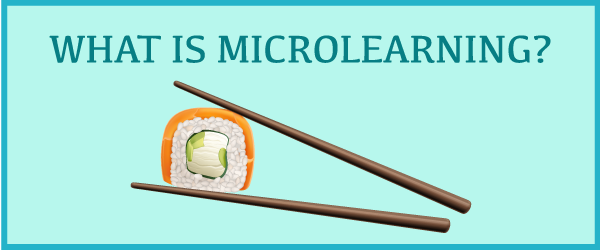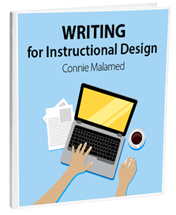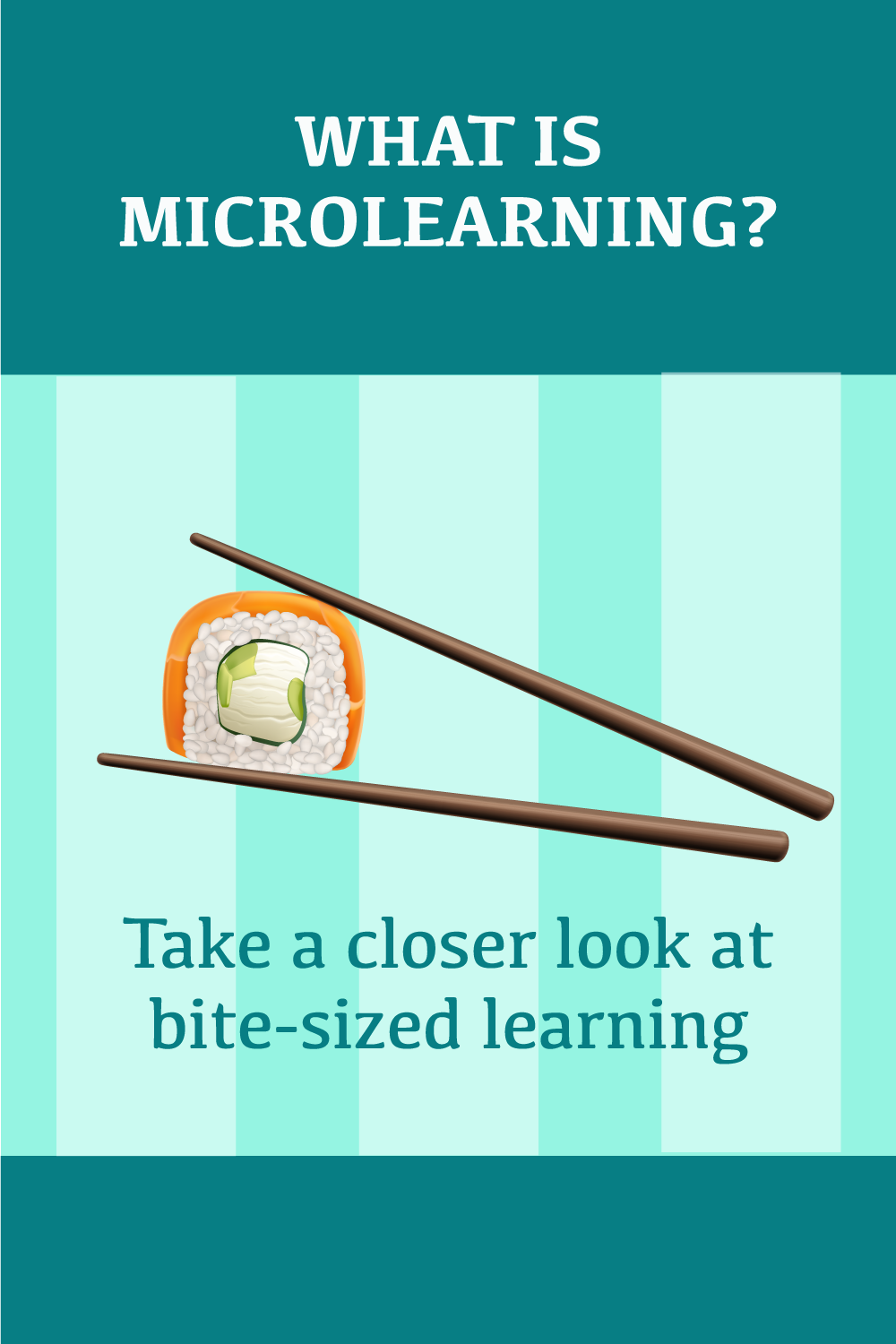
What is microlearning? It’s an instructional strategy for quickly closing skill and knowledge gaps. It can be an ideal instructional approach for many situations because:
- Information changes quickly
- People find it difficult to keep up with things
- Resources are freely available online
- Newer technologies support it
Variety of Definitions
Some in the industry define microlearning as a small and informal self-directed learning experience. Examples include watching a Ted Talk or taking a lesson from Khan Academy.
Others think of microlearning as a more formal collection of brief learning experiences designed to meet a larger learning goal. Still others think that microlearning is synonymous with performance support or mobile learning.
Characteristics of Microlearning
In all of the varied definitions, you’ll find that microlearning has a few consistent features.
- Brevity: In their book Microlearning Short and Sweet, Kapp and Defelice note that time should not be an indicator of microlearning. Rather, think of microlearning as covering one objective.
- Granularity: Microlearning focuses on a narrow skill, concept or idea.
- Variety: Microlearning content can be in the form of an activity, game, discussion, video, eLearning, presentation, mobile learning, quiz, book chapter, or any other format from which someone learns.
Benefits
Like any type of learning intervention, microlearning has strengths and weaknesses. Here are a few of its benefits.
- Immediate Results. Bite-size learning allows a person to quickly close a small knowledge or skill gap. For example, some universities are using a microlearning strategy to help students learn about collaborative and social technologies.
- Diverse formats. For both unstructured and structured learning, microlearning has the potential for using a very blended approach to instruction.
- Budget friendly. Production costs for microlearning should be much lower than the costs for a major course production. The vision of microlearning is smaller and laser focused.
- Quick achievements. Because people can typically process around four bits of information at a time, it’s easier for a learner to achieve success from a short learning intervention. I’ve found this myself when studying a foreign language.
- Ideal for tagging. Small chunks of instructional content can be tagged for easy search, access and reuse. These were called learning objects in a previous incarnation.
- Fast-paced culture. Microlearning is a solution that busy workers will appreciate because it is not as disruptive as a day of training or even an hour or two of eLearning.
Disadvantages
There are some disadvantages to using a microlearning strategy. Here are some to consider:
- Lack of research. There is insufficient research to know whether microlearning is an effective strategy for reaching long-term learning goals.
- Learning fragments. For long-term learning goals, smaller learning experiences could end up as content fragments that are not tied together.
- Lack of cognitive synthesis. We can’t be certain that learners will synthesize content from microlearning well enough to construct appropriate mental models.
- Potential for confusion. If a microlearning solution includes a wide variety of formats, some learners could have problems switching between them.
The weaknesses of microlearning can most likely be fixed by sound instructional design practices. To ensure you don’t end up with learning fragments, ensure that small lessons are integrated into a complete whole when you need a holistic approach.
Some Ways to Use Microlearning
Lessons and learning activities that focus on one objective are becoming more common. When the audience and content can benefit from extreme chunking, well-designed microlearning seems to be a good strategy. Some example uses:
- Learning languages or topics that require repetition
- Brief tutorials for learning a software application
- Business processes and procedures for learning in the flow of work
- Interacting with case studies
- Practicing micro skills that build into larger skills
- Applying best practices one at a time
For more on this topic, listen to How to Plan and Design Microlearning or download the transcript. Also, see the book Microlearning: Short and Sweet by Karl Kapp and Robyn Defelice.
Where You Can Find Examples
A few platforms and/or websites offer micro courses. Here are a few.
- Grovo: Teaches professional skills with 60-second videos
- Google Primer: Lessons on business and video available for Android and iPhone
- 7Taps: Variety of examples
References:
- Grovo. Bite Size Is the Right Size: How Microlearning Shrinks the Skills Gap in Higher Education
- Hug, T. Microlearning in N. Seel (ed.), Encyclopedia of the Sciences of Learning, Springer, 2011.
- Hug, T., & Friesen, N. Outline of a microlearning agenda. eLearning Papers, Nº 16, pp. 1–13, 2009. http://www.academia.edu/2817967/Outline_of_a_Microlearning_agenda
- Kapp, K. & Defelice, R. Microlearning Short and Sweet. Association for Talent Development, 2019.
- Kovachev, D., Cao Y., Klamma, R., and Jarke M. Learn As You Go: New Ways of Cloud-Based Micro-learning for the Mobile Web in Lecture Notes in Computer Science Volume 7048, 2011, pp 51-61.
- von Rosing, M., von Scheel, H, and Scheer, A. The Complete Business Process Handbook. Morgan Kaufmann, December 6, 2014.



Hi Malvika,
I’ve never heard of nano learning. Is this something that needs to be differentiated or is it a buzz word. I like the way Karl Kapp and Robyn Defelice, authors of Microlearning Short and Sweet, point out that microlearning isn’t about time. That might help you determine whether this is an important distinction of not. Listen to this podcast where we discuss microlearning. https://theelearningcoach.com/podcasts/57/
Hi Connie,
How do we differentiate between Microlearning and Nano Learning?
Regards
Malvika
Nice article Connie!
With digitization, employees are no more restricted to sit in a classroom, going through hundreds of slides and discussing topics in detail. In fact, they can access online courses from their mobile devices including laptops, tablets and smartphones, anytime and anywhere. Microlearning is not a novice concept as checklists, quizzes, scenarios, videos and cheat sheets are some of its examples. With technological advancement, it has become possible to provide the world with a more efficient toolset to deliver efficient learning. Read the article: “Microlearning: An Innovative Learning Approach to Train Your Workforce” – https://www.gc-solutions.net/resources/articles/microlearning-an-innovative-learning-approach-to-train-your-workforce.html
This is a great summary of microlearning, Connie—thanks for sharing. My team at Lessonly absolutely loves the flexibility and on-demand access that microlearning provides! I’ve also read that this format of learning is very effective for millennial and Gen Z learners. Trying to present lengthy paragraphs of info to generations who are used to consuming info in 140 characters or short videos just doesn’t seem to work. Instead, I’ve found that they really enjoy reviewing targeted knowledge in training that takes about 15 minutes to complete through a digital experience. We also include knowledge checks (random questions throughout training) to ensure they understand what they’re learning. It’s great for our fast-paced environment and fosters ongoing training.
Hi Connie,
Nice article. Helps so many people to figure out what actually Microlearning is.
Here is a blog post on Microlearning and how it is improves learning and development strategies.
http://www.swiftelearningservices.com/microlearning-emerging-instructional-design-strategy-in-elearning/
Wonderful article. People are now using technology as a medium to provide microlearning. There have been a lot of innovations in this field. I have recently written an article dedicated to the use of technology for providing effective microlearning. You can find it here: http://academy.whatfix.com/microlearning/
Interesting take on microlearning. We have been working quite fervently in creating digital learning solutions and I truly believe microlearning will take over megalearning in the near future. http://blog.masteroapp.com/digitize-megalearning-microlearning/
Sounds like a good plan and it will be interesting to see the results. Good luck with this.
Connie
Great article on microlearning! My current department is in the process of developing a microlearning strategy to implement across the organization. We are doing this because old school training is expensive, time-consuming, and simply can’t be produced fast enough to react to a constantly changing work environment. There are challenges as many do not understand what microlearning is or how it can help their employees stay engaged during a learning event. You are right in saying that there is lack of research proving that this new trend is effective. I am definitely paying attention to new information that supports microlearning approaches.
Great, Mae. I think it has so many applications, but haven’t used it much myself either.
Connie
Hi Connie,
I just learned about microlearning and think it’s awesome! I am looking for an application for it in my work. Thanks for the article.